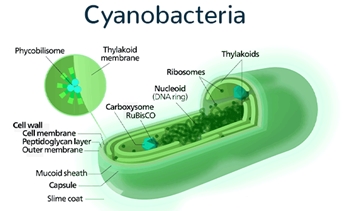PRELIMS BITS
Recent research on cyanobacteria in the Winam Gulf of Lake Victoria, Kenya, has focused on harmful algal blooms (CyanoHABs), which are becoming a significant environmental concern. This study, published in January 2025, aims to better understand these blooms and provide insights that can be applied to other regions like Lake Erie in the United States.

Key Findings:
- Cyanobacteria (blue-green algae) are not true algae but perform photosynthesis like plants. Some species produce harmful toxins, known as cyanotoxins, that can lead to environmental damage and health risks.
- CyanoHABs occur when cyanobacteria grow excessively, often turning water discolored, which can reduce oxygen levels, harming aquatic life.
- The study found widespread cyanoHAB events in the Winam Gulf, expanding from coastal areas like Homa Bay in 2022 to places like Bondo and the Yala River mouth in 2023. The main species identified was Dolichospermum, with Microcystis present in smaller quantities.
- Survival Strategies: Metagenomic analysis showed that cyanobacteria in the Gulf adapt to changing conditions using biosynthetic gene clusters (BGCs), similar to mechanisms found in Lake Erie.
Technological Integration:
The study advocates for the use of advanced “Omics” techniques such as metagenomics, metatranscriptomics, and metabolomics to improve water management and protect ecosystems and human health.
Lake Victoria Overview:
- World’s largest tropical lake and second-largest freshwater lake globally by area.
- Shared by Kenya, Uganda, and Tanzania, with significant reliance on the lake for fishing, employment, and livelihoods.
- The basin has a dense population of around 40 million people with an annual growth rate of 3.5%.
This research highlights the importance of monitoring cyanobacteria to protect Lake Victoria’s ecosystem and the health of the millions of people who depend on its resources.




